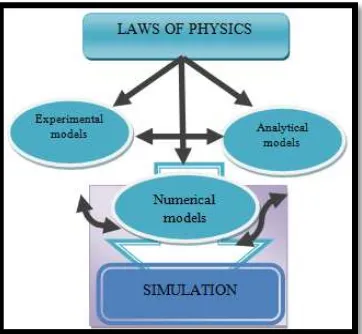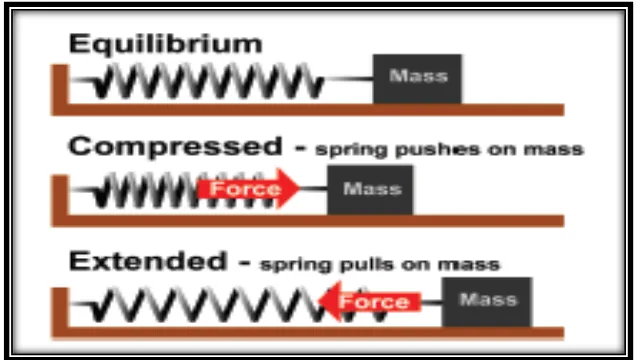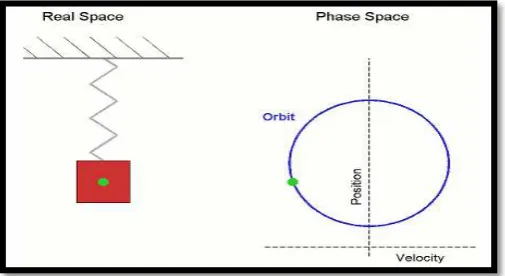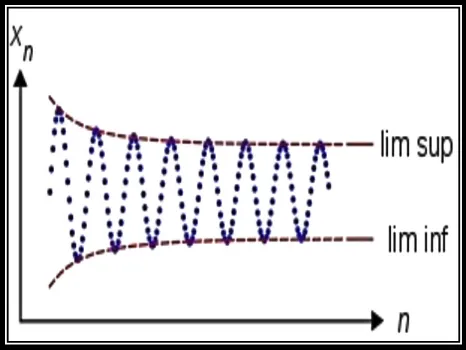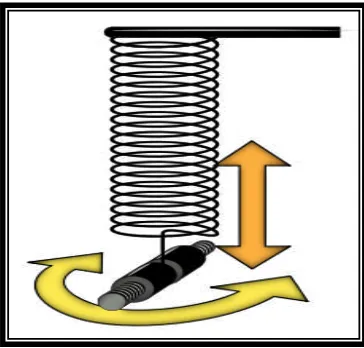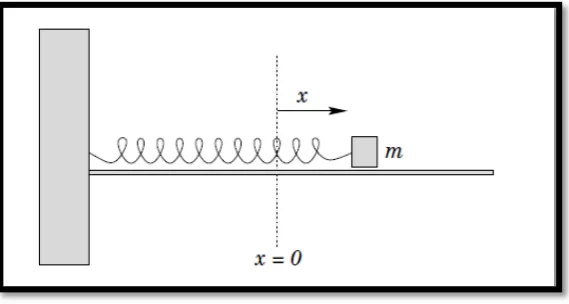NUMERICAL MODELLING OF SIMPLE HARMONIC OSCILLATOR
TUAN NORHASMIRA BINTI TUAN HARIS
SUPERVISOR DECLARATION
“I hereby declare that I have read this thesis and in my opinion this report is sufficient in terms of scope and quality for the award of the degree of Bachelor of
Mechanical Engineering (Structure and Material)”
Signature : ...
Supervisor : ...
NUMERICAL MODELLING OF SIMPLE HARMONIC OSCILLATOR
TUAN NORHASMIRA BT TUAN HARIS
This Report is Written as partial fulfilment for
Bachelor of Mechanical Engineering (Structure&Materials) with honours
Faculty of Mechanical Engineering Universiti Teknikal Malaysia Melaka
DECLARATION
“I hereby declare that the work in this report is my own except for summaries and quotations which have been duly acknowledged”
Signature : ...
Author : ...
ACKNOWLEDGEMENT
First and foremost, I would like to express my deepest thanks to Engr.Dr.Md
Fahmi Abd Samad @ Mahmood, a lecturer at University Teknikal Malaysia Melaka
(UTeM) and also assigned, as my supervisor who has supported my work throughout
my final year project with his patience and knowledge.
Deepest thanks and appreciation to my parents, family and others for their
cooperation, encouragement, constructive suggestion and full of support for my
report completion from the beginning until the end of this report.
My sincere thanks also go to all of my friends and everyone that has
contributed by supporting my work during the final year project I progress till it is
fully completed.
Last but not least, my thanks to Faculty of Mechanical Engineering, UTeM
ABSTRACT
Numerical method is a technique whereby mathematical problems are
formulated so that they can be solved with arithmetic and logical operations.
Harmonic oscillator is a physical system that is bound to a position of stable
equilibrium by a restoring force or torque proportional to the linear or angular
displacement from this position. If such a body is disturbed from its equilibrium
position and released, and if damping can be neglected, the resulting vibration will be
simple harmonic motion, with no overtones. The behaviour of the simple harmonic
oscillator will change whenever the parameters involved are changed and the
prediction of the changes can be predicted using MATLAB software. The calculation
of the simple harmonic motion can be obtained from finite difference scheme
equation. When the equation of finite difference scheme of simple harmonic
oscillator is obtained, the parameters and equation are keyed in into MATLAB
language. The parameters related are changed based on certain range and the graph
simple harmonic oscillator is analyzed and the behaviour of simple harmonic
oscillation is obtained. In this project, the program had been completed and verified
ABSTRAK
Kaedah berangka adalah salah satu teknik penyelesaian masalah matematik
yang digubal untuk menyelesaikan pemasalahan aritmetik dengan menggunakan
operasi logik ringkas. Pengayun harmonik adalah sistem fizikal yang dikawal
kedudukan keseimbangannya yang stabil dengan daya ataupun daya kilas yang
berkadar dengan kadar sesaran linear ataupun sudut dari kedudukan asal. APabila
sesuatu badan terganggu dari kedudukan seimbangnya lalu dilepaskan serta
sekiranya redaman diabaikan, getaran yang terhasil akan menjadi pergerakan
harmonik mudah tanpa redaman. Tingkah laku pengayun harmonik mudah akan
berubah apabila parameter yang terlibat diubah. Keadaan perubahan tersebut boleh
dilakukan menggunakan pengiraan yang dimasukkan di dalam perisian MATLAB.
Parameter yang digunakan dalam jalankerja pengiraan diperolehi daipada persamaan
skim pembezaan terhingga. Apabila persamaan skim pembeza terhingga pengayun
harmonik mudah telah didapati, parameter dan persamaan dimasukkan ke dalam
bahasa MATLAB. Parameter yang berkaitan ditukar berdasarkan pelbagai nilai
tertentu dan graf pengayun harmonik mudah dianalisa dan tingkah laku ayunan
harmonik mudah diperolehi. Dalam projek ini, program penuh telah dihasilkan dan
TABLE OF CONTENTS
DECLARATION i
ACKNOWLEDGEMENT ii
ABSTRACT iii
ABSTRAK iv
TABLE OF CONTENTS v
LIST OF FIGURE vii
LIST OF TABLE x
LIST OF APPENDICES xi
CHAPTER 1 1
INTRODUCTION 1
1.1 Background 1
1.2 Simple Harmonic Oscillator 3
1.3 Problem Statement 5
1.4 Objectives Of Project 6
1.5 Scope Of Project 6
CHAPTER 2 7
LITERATURE REVIEW 7
2.1 Oscillation and Waves 7
2.3 Simple Harmonic Motion: Equation of Motion 18
2.4 Free Oscillation and Rotation of A Rigid Pendulum 24
2.5 Nyquist Theorem 26
CHAPTER 3 28
METHODOLOGY 28
3.1 Project Flow 28
3.2 Definition Of Global Parameter 29
3.3 Derivation of Parameter 32
3.4 Finite Difference Scheme 36
3.5 Coding Draft 38
3.6 Selection of Variables And Limitations 42
CHAPTER 4 43
RESULT AND DISCUSSION 43
4.2 Variation of Variable Value 45
4.3 Discussion 57
CHAPTER 5 59
CONCLUSION 59
REFERENCES 60
LIST OF FIGURE
Title Page
Figure 1.1: Relationship between Types of Models and
Simulation
2
Figure 1.2: Mass on Spring during Extension and Compression 4
Figure 1.3: A Stretched Rubber Band 5
Figure 1.4: Simple Harmonic Oscillation 5
Figure 2.1: Oscillation of a Sequence; Difference between the
Limit Superior and Limit Inferior of the Sequence.
7
Figure 2.2: A Wilberforce Pendulum Alternates between Two
Oscillation Modes
9
Figure 2.3: Mass on a Spring 10
Figure 2.4: Graph of Simple Harmonic Oscillation 11
Figure 2.5: Example of Cycle 13
Figure 2.6: Cycle of the Pendulum 14
Figure 2.7: Sound Wave of Speaker Cone 14
Figure 2.8: Small Amplitude Versus Large Amplitude 15
Figure 2.10: Mass Attached to a Spring Without Displacement 17
Figure 2.11: Mass Attached to a Spring With Displacement 17
Figure 2.12: Mass hung on spring 19
Figure 2.13: Illustration of the oscillator position at time zero in relation the oscillator’s initial phase
21
Figure 2.14: Time Series for a Free Harmonic Oscillator 22
Figure 2.15: Pendulum 23
Figure 2.16: Mass Spring System 23
Figure 2.17: Sine Wave 26
Figure 2.18: Sampling at 1 Time Per Cycle 26
Figure 2.19: Sampling at 1.5 Times Per Cycle 27
Figure 2.20: Sampling at 2 Times Per cycle 27
Figure 2.21: Sampling at Many Times per Cycle 27
Figure 3.1: Flowchart of Phase I 28
Figure 3.2: Flowchart of Phase II 29
Figure 3.3: Displacement vs. Time plot 31
Figure 3.4: Example of Comments 39
Figure 3.5: Example of Parameters Saved 39
Figure 3.6: Example of Conditions
40
Figure 3.7: Example of Parameters Derived
41
Figure 4.3: Graph of Scheme Output(SR=441Hz) 45
Figure 4.4: Graph of Scheme Output(SR=391Hz) 46
Figure 4.5: Graph of Scheme Output(SR=341Hz) 46
Figure 4.6: Graph of Scheme Output(SR=291Hz) 47
Figure 4.7: Graph of Scheme Output(SR=241Hz) 47
Figure 4.8: Graph of Scheme Output(f0=10Hz) 48
Figure 4.9: Graph of Scheme Output(f0=8Hz) 49
Figure 4.10: Graph of Scheme Output(f0=6Hz) 49
Figure 4.11: Graph of Scheme Output(f0=4Hz) 50
Figure 4.12: Graph of Scheme Output(f0=2Hz) 50
Figure 4.13: Graph of Scheme Output(u0=0.5m) 51
Figure 4.14: Graph of Scheme Output(u0=0.4m) 52
Figure 4.15: Graph of Scheme Output(u0=0.3m) 52
Figure 4.16: Graph of Scheme Output(u0=0.2m) 53
Figure 4.17: Graph of Scheme Output(u0=0.1m) 53 Figure 4.18: Graph of Scheme Output(v0=0.0m/s) 54
Figure 4.19: Graph of Scheme Output(v0=50m/s) 55
Figure 4.20: Graph of Scheme Output(v0=100m/s) 55
Figure 4.21: Graph of Scheme Output(v0=150m/s) 56
LIST OF TABLE
Title Page
Table 2.1: Value of T/T0 Based On the Amplitude 25
Table 3.1: Logical and Relational Operators 38
LIST OF APPENDICES
Alphabet Title Page
A Gantt Chart 62
B Torsional Oscillator 63
C Grandfather's Clock 63
D Pendulum 64
E Swing 64
CHAPTER 1
INTRODUCTION
1.1 BACKGROUND
A model is a representation of the construction and working of some system
of interest. A model is similar to but simpler than the system it represents. One
purpose of a model is to enable the analyst to predict the effect of changes to the
system.
On the one hand, a model should be a close approximation to the real system
and incorporate most of its salient features. A good model is a judicious trade off
between realism and simplicity.
As written by Agarwal (2011), Mathematical and Computer
Modellingprovides a medium of exchange for the diverse disciplines
utilizing mathematical or computer modelling as either a theoretical or working tool.
A simulation of a system is the operation of a model of the system. The
model can be reconfigured and experimented. Usually, this is impossible, too
expensive or impractical to do in the system it represents. Simulation is used before
an existing system is altered or a new system built, to reduce the chances of failure to
meet specifications, to eliminate unforeseen bottlenecks, to prevent under or
over-utilization of resources, and to optimize system performance, Claude (2012).
Based on the process of simulations, there are three types of models (Hensen,
mathematical expressions may be derived based on experimental data, laws of physic
and statistics. The advantage of the analytical types of models is they are easy to
implement into standard engineering tools or spreadsheets.
2) Experimental models
Experimental models may either address the entire application or may be a model for
a small part of the system. The main advantage of experimental models is that they
yield results close to the real world application. However, it must be pointed out that
the result generated from an experimental model is derived through the means of
subjecting a simplified structure that corresponds to a certain characteristic of the
application with a set of controlled parameters.
3) Numerical models
Numerical models technique is the youngest one of the three types of models. Numerical models are often the type of models that are dealt with as ‘simulations’, since numerical models are often implemented into expensive expert tools where the
process from initial input to advanced colour plots of the solution is fairly
incomprehensible . One of the main advantages in the use of numerical modelling is
studies and optimization techniques are easy to apply.
Results derived from all types of models may be used as a part of a
simulation process and the results from the models may be used to enhance the
outcome of a different type of model. An overview of the relations between the types
of models and simulation is seen in Figure 1.1.
1.2 SIMPLE HARMONIC OSCILLATOR
Michael (2009) explained that a simple harmonic oscillator (SHO) is a mass
connected to some elastic object of negligible mass that is fixed at the other end and
constrained so that it may only move in one dimension. This simplified model
approximates many systems that vibrate or oscillate: drum heads, guitar strings, and
the quantum mechanical descriptions of an atom. The differential equation describing
a simple harmonic equation is as below:
or equivalently
Here, ωo is the natural frequency of the oscillator and define its position. The second order equation can be broken into two first order equations as follows:
To develop the idea of a harmonic oscillator the most common example of
harmonic oscillation is a mass on a spring. For a given spring with constant k, the
spring always puts a force on the mass to return it to the equilibrium position. Recall
also that the magnitude of this force is always given by:
where the equilibrium point is denoted by x = 0. In other words, the more the spring
is stretched or compressed, the harder the spring pushes to return the block to its
equilibrium position.
This equation is only valid if there is no other force acting on the block. If
there is friction between the block and the ground, or air resistance, the motion is not
simple harmonic, and the force on the block cannot be described by the previous
Figure 1.2 shows that when the spring is compressed, it pushes back on the mass.
When the spring is extended, it pulls on the mass. The system is an oscillator because
the push-pull of the spring is a restoring force and the mass supplies the inertia. An
example of such system is a car (mass) and its shock absorbers (springs). Along with
springs, shock absorbers also have high friction dampers that quickly slow any
oscillation down.
Figure 1.2: Mass on Spring during Extension and Compression
2) A vibrating string
Figure 1.3 shows Rubber band stretched between two rods. If the middle of the
rubber band is pulled to the side, it will move back toward being straight when it is
released. Stretching the rubber band to the side creates a restoring force. When the
rubber band is released, inertia carries it past being straight and it vibrates. Vibrating
Figure 1.3: A Stretched Rubber Band
1.3 PROBLEM STATEMENT
Simple harmonic motion (SHM) is a type of periodic motion where the
restoring force is directly proportional to the displacement. Simple harmonic motion
can be easily understood via aid of SHM graph as shown in Figure 1.4. It often
happen in any situation such as a system consisting of a mass attached to a spring, a
molecule inside a solid, and a swing on a playground. SHM depends on many
parameters such as displacement, velocity and frequency. Whenever any of these
parameters change, the behaviour and characteristic of simple harmonic oscillator
will also change. The prediction of this change will assist in many system designs.
This can be achieved by using numerical modelling.
1. To establish a clear understanding of the behaviour of simple harmonic oscillator
through numerical modelling.
2. To investigate the characteristics of simple harmonic oscillator through the
variation of its parameters.
1.5 SCOPE OF PROJECT
All simulations are performed using MATLAB. The field of study is related
CHAPTER 2
LITERATURE REVIEW
2.1 OSCILLATION AND WAVES
Referring to deduction of Zamora (2006), oscillation is the repetitive variation,
typically in time, of some measure about a central value or between two or more
different states as shown in Figure 2.1. The term vibration is sometimes used more
narrowly to mean a mechanical oscillation but sometimes is used to be synonymous
with oscillation. Oscillation occurs not only in physical system but also in biological
system and in human society. In mathematics, oscillation quantifies the amount
which a sequence or function tends to move between extremes
Figure 2.1: Oscillation of a Sequence; Difference between the Limit Superior and
The simplest mechanical oscillating system is a mass attached to
a linear spring subject to no other forces. Such a system may be approximated on an
air table or ice surface. The system is in an equilibrium state when the spring is
static. If the system is displaced from the equilibrium, there is a net restoring force on
the mass, tending to bring it back to equilibrium. If a constant force such as gravity is
added to the system, the point of equilibrium is shifted. The time taken for an
oscillation to occur is often referred to as the oscillatory period. In the spring-mass
system, oscillations occur because, at the static equilibrium displacement, the mass
has kinetic energy which is converted into potential energy stored in the spring at the
extremes of its path.
2) Damped and driven oscillation
All real-world oscillator systems are thermodynamically irreversible. This means
there are dissipative processes such as friction or electrical resistance which
continually convert some of the energy stored in the oscillator into heat in the
environment. This is called damping. For example of driven oscillation , the
phenomenon of flutter in aerodynamics occurs when an arbitrarily small
displacement of an aircraft wing (from its equilibrium) results in an increase in
the angle of attack of the wing on the air flow and a consequential increase in lift
coefficient, leading to a still greater displacement. Another example is a child plays a
swing on a playground. To start swinging, the child will push herself backward using
her leg and release it. After stay swinging for a few swings, the swing had become
slow and the child will push herself again. Hence, the swing continues to swing. In
this phenomenon, it can be said that the child's legs are some driven force applied
(driven) to the system and the movements of swing become slower due to the
damped phenomenon.
3) Coupled oscillation
The harmonic oscillator and the systems it models have a single degree of freedom.
More complicated systems have more degrees of freedom, for example two masses
mounted on a common wall will tend to synchronise. Well-known is the Wilberforce
pendulum as shown in Figure 1.3, where the oscillation alternates between an
elongation of a vertical spring and the rotation of an object at the end of that spring.
Two pendulums with the same period fixed on a string act as pair of coupled
oscillators. The oscillation alternates between the two.
Figure 2.2: A Wilberforce Pendulum Alternates between Two Oscillation Modes
An oscillation is a disturbance in a physical that is repetitive in time. A wave
is a disturbance in an extended physical system that is both repetitive in time and
periodic in space. In general, an oscillation involves a continuous back and forth
flows of energy between two different types of energy which are kinetic and
potential energy, for example in the case of a pendulum(Fitzpatrick, 2000). A wave
involves similar repetitive energy flows to an oscillation but in addition, is capable of
transmitting energy and information from place to place.
One of the examples of simple harmonic oscillation is a mass on a spring
(Figure 2.3). Consider a compact mass m which slides over a frictionless horizontal
surface. Suppose that the mass is attached to one end of a light horizontal spring
whose other end is anchored in an immovable wall. At time t, let x (t) be the
extension of the spring, the difference between the spring’s actual length and its
unstretched length. Obviously, x (t) can also be used as a coordinate to determine the
instantaneous horizontal displacement of the mass. The equilibrium state of the
system corresponds to the situation in which the mass is at rest, and the spring is
unextended. In this state, zero horizontal force acts on the mass, and so there is no
Here, k > 0 is the so-called force constant of the spring. The negative sign
indicates that f(x) is indeed a restoring force. Hooke’s law only holds for relatively
small spring extensions. Hence, the displacement of the mass cannot be made too
large. Incidentally, the motion of this particular dynamical system is representative of
the motion of a wide variety of mechanical systems when they are slightly disturbed
from a stable equilibrium state. Newton’s second law of motion gives following time
evolution equation for the system:
Where .This differential equation is known as the simple harmonic
oscillator equation and its solution has been known for centuries. The solution is:
where; is angular frequency and is phase constant.
Figure 2.3: Mass on a Spring
The type of behaviour shown in Figure 2.4 is called simple harmonic
